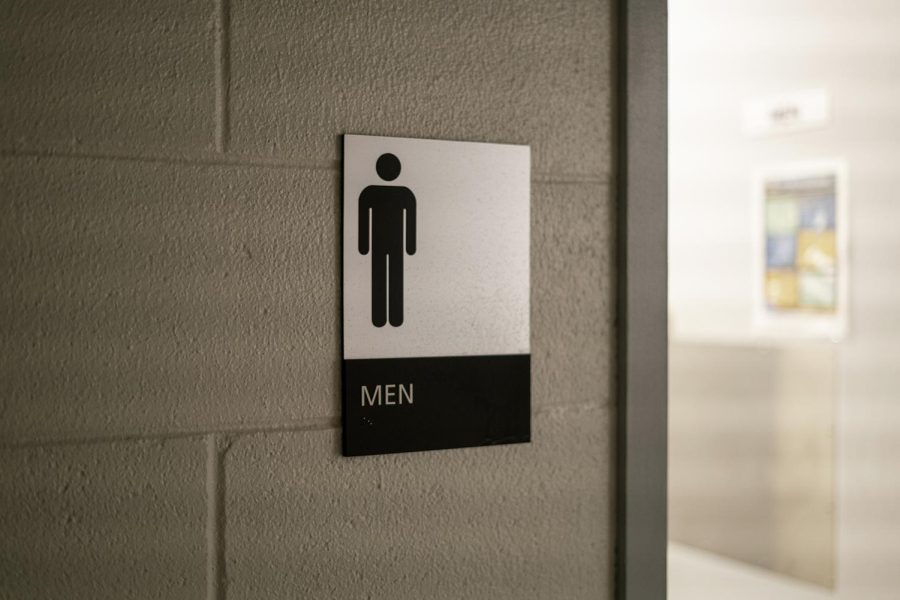Gender Inclusive Restrooms Garner Student Feedback
To many, public restrooms are just another banality of modern life taken for granted, but transgender and nonbinary students at Seattle University report that using the restroom is often a highly stressful or even traumatic experience. While the university has created gender inclusive restrooms across campus, some students report feeling uncomfortable in their preferred gendered restrooms and are concerned about the limited availability of gender inclusive facilities in some buildings.
Eve Wiseman, a second-year art major, largely feels comfortable using the women’s restroom, but offered insight into why students may avoid using their preferred restroom. She recalls that in one instance, as she was going into the restroom, a woman made a remark mistaking her gender. Due to situations like these, she prefers to use the restroom and shower when it’s relatively empty or when she’s confident she can use the restroom without being mistreated.
“I was wearing a big t-shirt and normal jeans, but the goal is for that to not matter at all,” Wiseman said.
Using the restrooms and showers as a nonbinary student is another prospect altogether. As many do not feel comfortable using either of the gendered options, gender inclusive restrooms are a necessity. However, accessing these facilities can be a challenge. For example, the Xavier Global House has only one gender inclusive restroom and no shower. Wiseman recalls that a friend of hers living there last year would travel all the way across campus to the University Recreation Center just to shower, a ten minute walk. Campion Hall, the largest first-year residence, has no gender inclusive restrooms. Bellarmine Hall offers gender inclusive restrooms on each floor, but the single occupancy style often fails to meet high levels of demand.
Em Wheeler, the co-president of the university’s LGBTQ+ organization, Triangle Club, has lived in Bellarmine Hall for two years. Wheeler explained that while the situation there is far better than Xavier or Campion, the gender inclusive restroom on his floor is often in use by other students when he needs it. Nonetheless, he feels that the inconvenience of going between different floors to find an open restroom is often preferable to either gendered option.
“Using the bathroom is an emotional experience for trans individuals,” Wheeler said. “I’m constantly scared of making someone uncomfortable because I’m in there.”
Wheeler also worries this demand for gender inclusive restrooms may increase in coming years.
“We’re living in a changing society and the numbers of trans and genderqueer people who feel more comfortable in a gender neutral bathroom is increasing by the year, and I feel like our bathroom situations in the residence halls are a little bit outdated,” Wheeler said.
Second-year Creative Writing student Rhyan Mack, who works with Wheeler in the Triangle Club as the Events Coordinator, seconded these concerns. As the number of students who need gender inclusive restrooms increases, Mack thinks more needs to be done to improve access in other residences.
“Bellarmine shouldn’t be the only place they can put trans people,” Mack said.
However, building new restrooms is often easier said than done. Steve De Bruhl, the assistant director of design and construction at Seattle U, referenced building codes as one particular challenge to be contented with. Under the guidance of reports from the Committee for Improving Trans Inclusion, studies were conducted to determine which on-campus restrooms could be converted to gender inclusive restrooms in 2015 and 2016. In buildings like Bellarmine, where pre-existing restrooms were split into smaller gendered restrooms and new gender inclusive restrooms, designers had to ensure they met the legally required number of fixtures in the men’s and women’s restrooms while also meeting American Disabilities Act requirements. De Bruhl is optimistic about the progress, however.
“I think there is a lot of interest and demand from the community to have these types of facilities,” De Bruhl said. “And so when we do a new project, we will incorporate them.”
The purpose-built gender inclusive restrooms in Sinegal Center completed last year, as well as the introduction of a multi-stall gender inclusive restroom in the Administration Building, leave students hopeful for the future of accessible spaces at Seattle U. With future renovations on their way, gender inclusive restrooms may become more widespread on campus.


